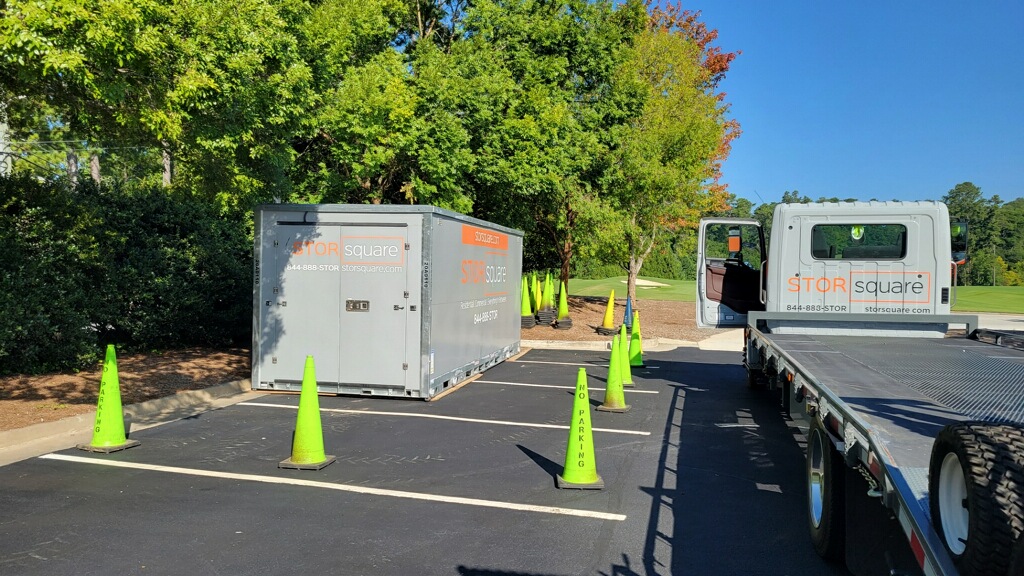Step 1: Plan Ahead
The first step in any successful commercial move is planning. It’s never too early to begin preparing. The earlier you start, the more time you’ll have to make the right decisions and avoid last-minute stress. Create a detailed moving plan and set a timeline with milestones. Make sure to consider the following:
- Budgeting: Determine the moving costs, including the price of packing materials, labor, and any other moving services you might need. If you’re looking to save money, consider using moving units or storage container rentals.
- Inventory: List all the items that need to be moved. Decide what to keep, sell, donate, or discard.
- Schedule: Set dates for when you’ll start and finish your move. Try to schedule the least disruptive time for your business—avoiding peak hours and minimizing downtime.
Step 2: Hire Professional Movers (or Do It Yourself)
While you can handle your commercial move in-house, hiring professionals can save you time and effort. If you’re unsure how to move a business, use portable storage units or moving containers to pack flexibly and save money. Portable storage units arrive at your location, providing a quick, flexible solution for businesses.
If you choose DIY, rent mini mobile storage or driveway containers. These containers let you pack and organize freely without a moving crew’s schedule.
Step 3: Pack Efficiently
Packing is one of the most time-consuming tasks of a commercial move. Pack everything securely to prevent damage and simplify unpacking. Use proper packing materials, such as boxes, packing tape, and bubble wrap for fragile items. Here’s a quick packing strategy:
- Label Boxes: Label each box with its contents and destination (i.e., office name or department). This will help you sort everything quickly when you arrive at the new location.
- Use Storage Container Rentals for Large Items: If your business has large furniture, equipment, or inventory, consider using portable storage units for these items. Portable self-storage units securely store goods for relocation.
If you prefer, moving unit storage is another great option for packing at your own pace. These moving units can be parked outside your building, allowing you to load them without the need for external movers. This flexibility helps reduce the cost of moving units and allows for a more manageable move, especially when you’re learning how to move a business efficiently.

Step 4: Move Everything to the New Location
Ensure your team is ready and portable storage units are in place on moving day. Moving container rentals deliver to your location, minimizing the stress and rush of traditional moves. If you’re using driveway storage containers, make sure there is enough space for them to be placed conveniently.
During the move, you can either hire a professional moving company to transport your moving containers or do it yourself if you’ve opted for self-storage units. If you’re unsure about how to move a business yourself, make sure your vehicle is large enough to accommodate the containers or the storage unit sizes you’re renting.
Step 5: Unload and Set Up
Once the move is complete, it’s time to unpack and set up your new workspace. Take your time and be organized about where everything goes. It’s important to have a clear plan for how to arrange your office, warehouse, or retail space for optimal efficiency.
Unload your portable storage units or container rentals systematically, starting with the most important items for daily operations. This is an important part of understanding how to move a business efficiently. Set up your technology first, followed by furniture, equipment, and supplies.
Step 6: Handle Post-Move Tasks
After the move, complete a few final tasks to ensure your business operations run smoothly:
- Notify Clients and Customers: Send out notifications to your clients and customers about the new location and any changes in service or hours.
- Update Business Information: Update your business address on your website, social media, and with relevant directories.
- Inspect the New Space: Take time to inspect your new location for any issues like maintenance or safety concerns.
Step 7: Maintain Flexibility with Portable Storage Options
Even after the move, there may still be a need for extra space. If your business is growing or you have temporary storage needs, using portable storage units is a flexible and cost-effective solution. Understanding how to move a business effectively includes considering options for storing items at your new location or opting for off-site storage for inventory or documents. Storage container rentals can give you peace of mind by providing extra storage space without the long-term commitment.
In addition, moving unit storage cost tends to be more affordable than traditional movers, especially when you factor in the convenience and flexibility they offer. unit storage sizes are available in various configurations to fit your exact needs, ensuring you only pay for the space you use.
Stress-Free Tips on How to Move a Business
Relocating your business doesn’t have to be stressful. With proper planning, the right tools, and efficient storage solutions like portable storage units, storage container rentals, and moving containers, you can make the move as seamless as possible. Consider mini mobile storage for flexible, cost-effective storage during your move, and reduce your unit moving costs by packing yourself and selecting the right unit storage sizes.
For a smooth and efficient commercial move, visit STORsquare for all your storage needs. They offer a wide range of solutions to help businesses make the most of their relocation experience and learn how to move a business with ease. Whether you’re looking for moving units , self-storage units, or secure driveway storage containers, STORsquare has the right options to fit your business needs.

